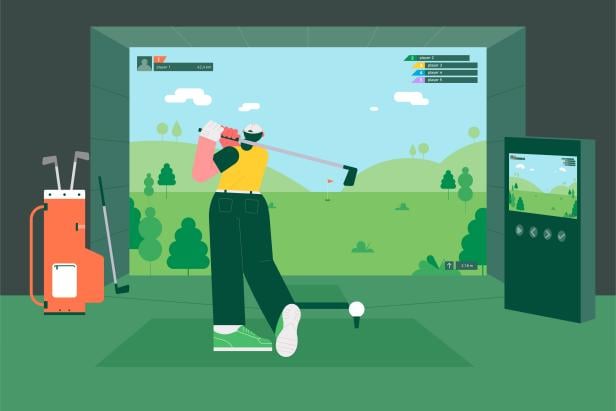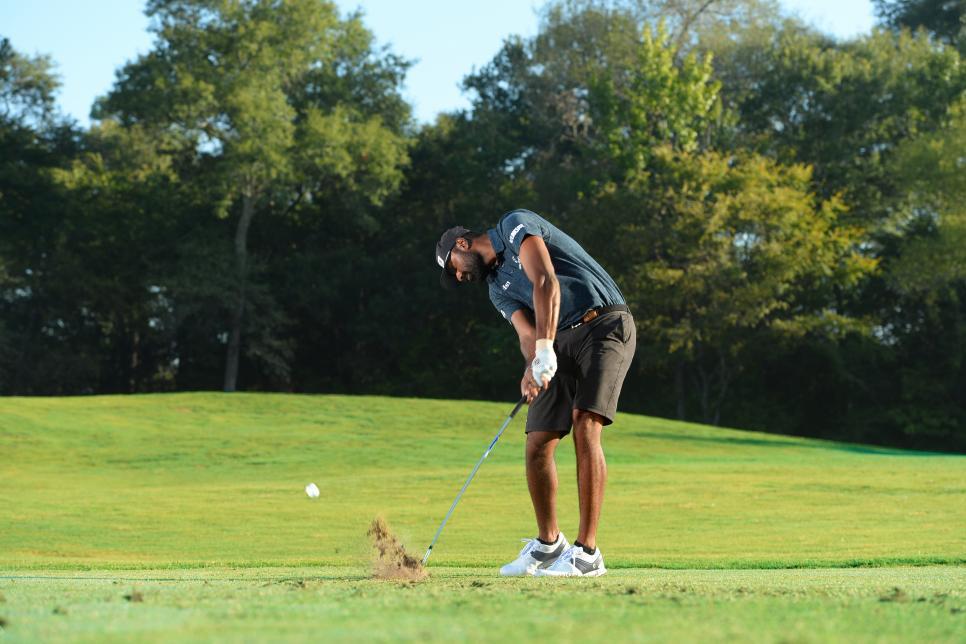10 must-have shots if you want to be a good golfer, revealed by advanced stats – Australian Golf Digest

- by Admin
- August 8, 2024

If you’re reading this, there’s a good chance you’re an 80s shooter, wondering how you can live in the 70s more consistently.
Or maybe you’re a golfer who wants to lower the ceiling on your bad rounds. Maybe when things go poorly, you’re looking at the score in the mid 80s, rather than the low-90s.
Either way, this should help.
I looked at the stats of thousands of amateur golfers of all levels provided by Arccos, the official game-tracker of the PGA Tour. The numbers reveal some interesting mistakes that golfers make. That’s what you’ll see below—along with the shots you’ll need to add to your arsenal for each. Maybe you have some of them already. That’s good! The more of them you have, the closer to consistent 70s shooter you’ll be.
So let’s dive in…
1. A not-pretty-but-it-works long bunker shot
Most golfers are bad at bunker shots, but they’re especially bad at long bunker shots. For those we mean, bunkers near the green but more than 50 yards away, or from the fairway.
Let’s say a 90s shooter has a 100 yard shot from a bunker. According to Arccos data, they hit the ball 20 yards, or less, about one in 10 times. That’s a lot! That means 10 percent of the time, they’re encountering disaster. Either leaving their ball in the bunker, or hitting a chunk that gets out of the bunker, but not much else.
Here’s a good fairway bunker tip from Golf Digest Best in State Jason Birnbaum that could help.
Tom Shaw/R&A
2. A keep-it-in-the-ballpark drive
80s and 90s shooters have a big, nasty, disaster miss off the tee lurking. And it’s a primary cause of their big numbers.
According to Arccos, those golfers…
- Hit the fairway less than 50 percent of the time.
- Miss by more than 40 yards more than 11 percent of the time.
- Hit their drive OB or into a hazard more than 8 percent of the time.
Golfers, in short, need a second serve drive. Something that won’t go as far—or may not be pretty—but will stay relatively trouble free.
 3. A chop-it-onto-the-green chip
3. A chop-it-onto-the-green chip
The first and foremost goal of being near the green, simple as it sounds, is to hit the green.
Amateur golfers often struggle with that, though. 90s shooters miss the green from inside of 20 yards about 10 percent of the time. This is commonly when the ball is in a bad lie, sitting in nasty rough, short-sided, or in some other form of trouble.
The solution? Some shot that you can essentially use not to get your ball close, but to move your ball out of these situations and anywhere onto the green.
 4. An anywhere-on-the-clubface shot from uneven lies
4. An anywhere-on-the-clubface shot from uneven lies
Disaster shots are the enemy for amateur golfers.
From the fairway, that means major contact errors: Chunks, whiffs, shanks, tops. Those happen about three percent of the time, according to Arccos stats. Often, these really bad shots will happen on slightly awkward lies, when the ball is above or below your feet.
To avoid those, you need to know the basic principles of..
- Getting the clubface on the ball
- Hitting it before the ground.
Two iron essentials you can always turn to, as Top 50 coach Michael Breed explains in this series here.
5. A High, long approach shot
It’s hard work for most amateur golfers to hit greens from long range.
Once they get outside of 175 yards, Arccos finds that 10 handicaps have a Green in Regulation percentage that barely creeps above 20 percent—and dips lower with every yard.
The problem here is a lack of distance, but also a lack of height. The ball is not traveling as far as it can, or stopping as quickly as it could. You may need a high-lofted fairway wood in your bag. And once you get it, you may need tips on how to use it.
.png.rend.hgtvcom.966.1449.suffix/1723148638708.png) 6. A high-and-soft lag putt
6. A high-and-soft lag putt
Three-putting is one of the most annoying ways amateur golfers leak shots.
- From 25 to 30 feet, a 10 handicap golfer three-putts about 20 percent of the time.
- From 30 to 40 feet, they’re three putting more than 30 percent of the time.
To master three-putt avoidance you need to learn the art of going high and soft on the greens. Here’s a video that could help with that:
7. A bail out long-of-the-pin miss
There’s one place where amateur golfers miss the green the most: It’s short.
From 125 to 150 yards, 90s shooters come short 52 percent of the time. A big reason for that is because they make the kind of contact errors we talked about earlier (you can’t miss long when you top the ball), but club selection also plays a big role.
When there’s trouble short, golfers need to know how to strategize their way to a bail out long of the pin.
8. A go-to vanilla chip shot
Golfers simply don’t get up-and-down as much as they should.
You know how often a 10 handicap golfer gets up-and-down from short, greenside locations? About 30 percent. The closer you get that to 50 percent, the better off you’ll be. And for that, you need a basic, go-to vanilla chip shot.
9. A get-back-in-play recovery
We talked about crooked drives earlier, but let’s look at them again.
Golfers hit their ball in-play, but into a shot requiring some level of recovery shot (AKA, trees) more than 20 percent of the time.
Do you know how to hit a basic, knockdown-ish recovery shot?
10. An on-purpose shank
Yes, you read that right.
Can you shank a ball on command? Or toe it? Or top it? Or hit a big slice? or Hook?
Obviously, these aren’t shots you want or should hit on the golf course. But they’re shots that, if you can hit, show a level of clubface control that will help boost your hugely-important Green in Regulation statistic, which is 37 percent for 10 handicaps.
Sahith Theegala explains why here.

This article was originally published on golfdigest.com
The Latest News
-
January 10, 2025‘They can say what they want’: Smith excited with Test captaincy return
-
January 10, 2025Eye-watering record cash prize Australian Open winner will win
-
January 10, 2025UK seaside town leaves Australian tourist completely baffled
-
January 10, 2025Kyrgios steps up Australian Open preparation in a positive sign
-
January 10, 2025Watch Hideki Matsuyama (unintentionally!) hit his ball through an 8-inch gap in palm trees – Australian Golf Digest





